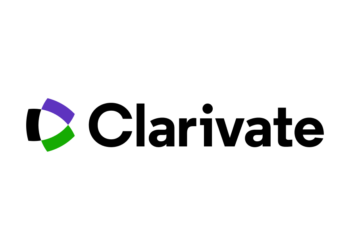Last year, my colleagues Tracy Bergstrom and Oya Y. Rieger and I wrote in an Ithaka S+R report about the role of enterprise software providers as part of digital publishing infrastructure. We observed that there are real competitiveness concerns in that only “a strong marketplace for shared enterprise systems makes it possible for smaller publishing organizations to thrive.” My concern for competitiveness within the scholarly publishing sector serves as important context for today’s news that Molecular Connections has purchased Morressier.
Molecular Connections is a Bangalore-based company that is fully owned by its founder and CEO, Jignesh Bhate. Morressier is a Berlin-based start-up run by its founder and CEO, Sami Benchekroun, who we interviewed last year as part of the Kitchen Essentials series. I was able to speak with Bhate and Benchekroun last week about this transaction.

Market Segment
Morressier builds the workflows that support review and integrity for research outputs such as conference proceeds and journal articles. It operates within a sector whose most well established providers include Aries and ScholarOne. These existing providers have struggled to update their architecture to meet modern publisher strategies and editorial requirements. At the same time, a number of major open access publishers have adopted their own purpose-built systems, while several major publishers have sought to bring these capabilities in house either through acquisition (such as Elsevier of Aries) or organic product investment (as with SpringerNature building SNAPP). Ultimately, the market for editorial infrastructure, if it has grown at all, has not kept up with the growth in scholarly publishing. There is an enormous need to focus on research integrity in the editorial process, and while incumbent providers have worked to support these needs it is less clear that they have found ways to productize them.
As a venture funded start-up, one year ago Morressier announced Series B funding of $16.5 million. With its roots in comparatively greenfield segments like conferences, Morressier in recent years has been expanding its ambit to include the scholarly article, where it has emphasized a focus on research integrity. There has been a healthy appetite for an alternative to the existing incumbent providers among many publishers, especially major not for profit scholarly societies and university presses, if Morressier’s advisory board membership is any indication.
Last year’s major acquisition, SilverChair purchasing ScholarOne from Clarivate, showed how private equity ownership enabled and pushed SilverChair to grow from its roots in the platform business to cover essentially the full workflow from manuscript submission to publication and online distribution. Now, ScholarOne will benefit from an infusion of investment and technology product methodology from a company that understands how to build platforms on which publishers are happy to rely. As a result, the opportunities to disrupt ScholarOne’s business may seem a little less straightforward today than they did six months ago. Morressier’s strategic alternatives were surely evaluated against this context.
The Deal
Molecular Connections is a fascinating company. Founded 20 years ago as a joint venture of the National University of Singapore and the Indian pharmaceutical giant Dr Reddy’s, and having taken on venture funding, it is now wholly owned by Bhate, its CEO, he tells me. Molecular Connections has a track record of providing databases and other services both to major pharmaceutical companies and publishers in our sector. Recently, IEEE contracted with it to support “research integrity, author experience, and streamlining editorial processes across its publishing ecosystem.” And yet, this article is the first time that Molecular Connections has been mentioned in The Scholarly Kitchen.
Benchekroun describes the stability of Molecular Connections and the trust that publishers place in it as key to the logic of the deal: “It is my firm belief that when there is a trusted large organization and a smaller innovator that can come together, we bridge the gap of what publishers are looking for — which is trust in products and technologies that actually solve the problems that they have at hand.” Bhate’s perspective is complementary. He emphasized that, while Morressier could have raised more capital, “Capital would only solve the problem to some extent.” Molecular Connections, he explained, also brings “delivery, execution, speed to market, execution.” Vision is invaluable but it is only as good as customer trust in the ability to execute.
The opportunity for Molecular Connections is to provide a platform — Morressier’s — on which a variety of its existing services can more effectively reach the market. Bhate calls this a hub and spoke model, in which Molecular Connections already has several spokes and Morressier can serve as the hub for publishers.
Looking Ahead
This deal leaves Morressier’s product portfolio independent of any of the major publishing houses. The plan shared with me is to continue to offer Morressier’s products to existing and new growth customers. Molecular Connections expects “to supplement and strengthen the Morressier team substantially.” If Molecular Connections is able not only to retain existing Morressier customers but drive growth through the hub and spoke model it envisions, it will help to establish Molecular Connections more tangibly as a serious competitor as a publishing infrastructure product provider.
The marketplace for publishing infrastructure products has continued to evolve steadily and, as noted above, shared infrastructure product providers are essential to preserving a robust publishing marketplace. Looking across the market, SilverChair, following its ScholarOne acquisition, is the most well established independent publishing infrastructure competitor. If Molecular Connections further establishes itself as an infrastructure product provider, it will be interesting to see how the market adapts.
As Morressier finds its exit, it is reasonable to ask about the long-term independence of Molecular Connections. And there, the matter is about succession for the founder-owner. When I asked Bhate about this, he told me without hesitation that they are planning for an IPO in roughly 3-4 years. If this comes to fruition, it will be by some calculations the only publishing infrastructure product provider to be publicly traded.
In preparation for an IPO, Molecular Connections will need to bulk up further, and Bhate hinted at additional acquisitions. Looking further ahead, he envisions acquiring or developing several additional “hubs” that will provide platforms for Molecular Connections services. These hubs could serve authors or serve consumers, much as Morressier serves publishers.
As for Benchekroun, a seemingly omnipresent figure in the sector in recent years, he will take on a new role with Molecular Connections as Global Head of Sales for Products. As Bhate explains, “Sami is great at creating impact and visibility. We are great at delivery. It’s a fantastic marriage made in heaven.”
Discussion
13 Thoughts on "Molecular Connections Buys Morressier"
“If this comes to fruition, it will be by some calculations the only publishing infrastructure product provider to be publicly traded.” – Curious to know by what calculation is Wiley Partner Solutions which runs Atypon and Research Exchange under a publicly traded company is being excluded from this category?
I’m sorry, I agree that is inaccurate as stated. I omitted the word “independent” from the description there. Of course Wiley (and also Elsevier with Aries) provides publisher infrastructure products.
Roger thank you for the great article. Jignesh has been working tirelessly over many years to build his organization and their tech stack. If anyone is capable of delivering an end to end solution, he will get it done.
So, Morriessier don’t have a product after 40+m investment and several years of development and the CEO has been moved from CEO to head of sales.
Also, given MC will very likely be aware of the problems introducing new technology into a environment that is fraught with long term contracts, slow decision making, and entrenched relationships…I am going to imagine they got it cheap, probably at a loss.
Is that a fair assessment?
Similar point as Patrick. “If this comes to fruition, it will be by some calculations the only publishing infrastructure product provider to be publicly traded.” MPS Limited, HighWire’s parent company, is publicly traded on the Indian stock exchange, and has been for many years. MPS is one of the largest suppliers of infrastructure (platforms for language polishing, hosting, workflow, analytics, e-commerce, ) and publishing services (JEO, pre and post-acceptance, integrity checking, AI/ML/NLM, conversion, production). We have about 2500 employees with offices in the US, Europe, India, China and Australia. Every major commercial publisher uses our products/services as do numerous society and university presses. We might be one of scholarly publishing’s best kept secrets?
“…well established providers include Aries and ScholarOne. These existing providers have struggled to update their architecture to meet modern publisher strategies and editorial requirements”
Setting aside the significant differences between the Aries and ScholarOne architectures overlooked by this statement, suppliers have behaved entirely rationally in the face of customers who mostly don’t want to pay for platform improvements.
In 2004 Aries and Inera collaborated to make available innovative reference checking to improve manuscript integrity and publication speed – (https://www.ariessys.com/news-and-events/press-releases/aries-systems-and-inera-collaborate-to-reduce-the-cost-and-time-of-manuscript-publication/) – In the *20* years since this “modern” innovation has been available almost no publishers have chosen to pay the few additional cents per manuscript it would cost to deploy this capability. I can give many other examples.
What can be done to address the dysfunctional relationship between scholarly publishers and the vendors who seek to serve them?
My comment is a bit off-track from the original post…sorry Roger!, but Richard, I so recognize the dynamic you describe, and it made me chuckle. When something is pitched and there’s no significant pick-up after an exhausting amount of time and conversations, there’s a product market fit issue…aka, if only the customers would…
I find publishers perfectly capable of recognizing and jumping on value, and I have certainly done so when I was a “publisher” myself, so while it can be frustrating when something doesn’t sell, it’s almost always because offerings and pitch are off from the needs, priorities, and agendas of buyers. I’ve also seen a share of…if you provide X, we would be interested, only to be followed by crickets when X launches. Sometimes because buyers aren’t forthcoming with true information, trying to be polite or avoiding to be sold to. Many buyers are good at withholding information because they don’t want to be sold to. And that vacuum can create the illusion of opportunity. Another challenge is maybe that the scholarly industry is saturated with customization. At times it can feel as if there is a greater chance of winning a lottery than finding two organizations that operate in identical ways. Finally, just an observation, I’ve always been puzzled by our industry’s reference to “vendors” as an antonym to a “publisher”. Before becoming a “vendor”, I was a “publisher”, and my experience is that publishers are vendors too – just with different customers. Certainly, librarians and authors seem to think of publishers as “vendors”.
Thanks Christian –
I agree and disagree with you. Of course, vendors should not be rewarded if they misjudge the market, but the conversation around scholarly platform innovation has become too weird.
I keep hearing industry leaders complaining about: 20-year-old technologies, poor architectures, outdated UIs, not end-to-end etc. – this all misses the point.
There are about 3.5 million manuscripts published each year. Assuming each is rejected once, this means there are about 7 million total submissions each year (not counting conference submissions).
If peer review platform vendors earn $15 per submission, the Total Addressable Market is $105M. Now, let’s exclude Elsevier (40% of market at least), the TAM is $63M (4.2M submissions).
Let’s say you invest $10M to build/buy a peer review platform, at 33% margin you’d have to process 2 million submissions just to earn back your investment. Few new market entrants in this space achieve 2,000 processed submissions, let alone 2 million.
It’s not a big market. There are established solutions. Customers are reluctant to pay for innovation.
That’s the context. Hopefully the conversation can become realistic and constructive.
Sorry Neil !
The consolidation of scholarly publishing infrastructure among a handful of platform vendors—many of whom also own journals—has created a deep and multifaceted lock-in. This lock-in is reinforced through long-term contracts, risk-averse decision-making processes that slow down platform transitions, the high cost and complexity of migration, and the tight social integration of sales teams with journal operators in what is ultimately a small industry. Over decades, the dominance of a small number of platforms has shaped a social-operational context where users expect any alternative to function exactly as their current system does, even if that system is outdated or inefficient. Meanwhile, the licensing costs of these platforms siphon off capital that could otherwise be used for business model innovation or platform transition, effectively keeping many journals locked into their current state.
It is not true that building a peer review or submission platform requires a $10M investment. Kotahi is a fully capable platform that was built for a fraction of that, and we now have the expertise to build these systems more efficiently. One of the biggest barriers to change is the lack of shared knowledge about how to develop and sustain these platforms. The scholarly publishing sector has seen multiple expensive failures—something I can speak to from my time at PLOS designing Aperta. These failures are, in part, a result of a fragmented knowledge ecosystem where each organization takes on the burden of development independently, often under the illusion that maintaining a proprietary workflow tool provides a competitive advantage. The reality is that these development and maintenance costs are enormous and get passed on to the entire scholarly ecosystem.
Even platforms that are built on open-source foundations, such as Wiley’s Phenom (originally developed at Hindawi and later acquired along with Hindawi’s journal portfolio for $298M), do not necessarily function as collaborative efforts. While it is a success that Phenom—originally built on Coko-developed infrastructure—is the only major new workflow platform to gain traction in the past decade, the broader trend of keeping platforms locked within single entities has led to inefficient spending and industry-wide cost burdens. You can build better systems for less, and whether through open-source collaboration or simply better development practices, the fact remains that smarter, cheaper alternatives are entirely possible.
Another fundamental issue is that most of the dominant platforms today were built on outdated architectures—many quite literally developed in the last century. When new technology emerges, these legacy platforms layer on new features without rethinking their core structure. This results in systems that feel like they were hacked together over time, akin to a house built before plumbing, with pipes strapped onto the walls as an afterthought. It functions, but it is inefficient, clunky, and creates persistent issues. These legacy platforms were designed in an era when FileMaker Pro represented best-practice thinking for workflow management. The field has moved on. Modern architectures enable vastly more efficient, scalable, and user-friendly ways of working, but the industry remains shackled to old systems because of the inertia created by lock-in and consolidation.
Change is possible, but it requires an enlightened player to stay in the market long enough with a new architecture and approach, proving real cost and time savings while outlasting the defensive contract cycles that currently block innovation. When that happens—and I would argue it is already beginning to happen—we will see the scholarly publishing technology landscape shift in ways that finally allow for meaningful progress.
This is an excellent point. Many publications want to create their workflows in the new system without really looking at if they should. The “we’ve always done it this way” approach is not a great strategy. Publications should be mapping their workflows ahead of time, looking for efficiencies and evaluating how new tech can enhance or improve operations rather than continuing using methods that may be outdated or based on workarounds to make the current tech work.
I think now is the time for publishers to move to modern technologies, not just to increase efficiency, but to offer a painless experience for authors, editorial offices and peer reviewers. These are the people who matter!
You can develop new technology while maintaining a profitable business. At River Valley, over the last decade we built ReView, our submission and peer review platform, without any external investment. The key was using our deep understanding of scholarly publishing, listening to clients and building the systems in-house from scratch. ReView has been in use by publishers for well over 10 years and even won the ISMTE award for innovation in 2022. The biggest barrier to moving systems seems to be not the length of contracts, but the pain of migration! Any new platform should offer a low-cost and painless migration process to encourage this change.
I agree that the pain of migration is a main barrier to switching systems along with publishers that push complimentary systems as part of publishing contracts.
The vast majority of publications lack the expertise to successfully transition. System vendors may have some transition plans they can offer to clients but I have found that they tend to be insufficient. I have heard from a number of people that they often end a transition feeling drained and unsatisfied with the final product.
This happens when the publication has not sufficiently researched its needs or examined its previous workflows to determine if those processes should be carried over to the next system. Vendors tend to do a poor job suggesting how their system can streamline or replace existing workflows as well.
There is a real need for most publications to review and evaluate their options right now. The established systems still offer a lot of benefits but I struggle to see them adapting to the changing landscape of peer review.
I do encourage anyone with the option of exploring some of the newer systems on the market to make the effort and if they do not have the staff or expertise on hand manage this process, then there are consultants out there who can assist.



